In a paper published in Oecologia in 1980, Richard Shine presented the results of his field and laboratory studies on the “costs” of reproduction in six montane Australian lizards. While there had been many theoretical models of trade-offs between current and future reproduction, Shine’s study was one of the first, at that time, to test them empirically. Thirty-six years after the paper was published, I asked Rick Shine about his motivation to do the work presented in this paper, memories of field and lab work, and what we have learnt since about the “costs” of reproduction in reptiles.
Citation: Shine, R. (1980). “Costs” of reproduction in reptiles. Oecologia, 46(1), 92-100.
Date of interview: Questions sent by email on 6th December, 2016; responses received by email on 12th December, 2016.
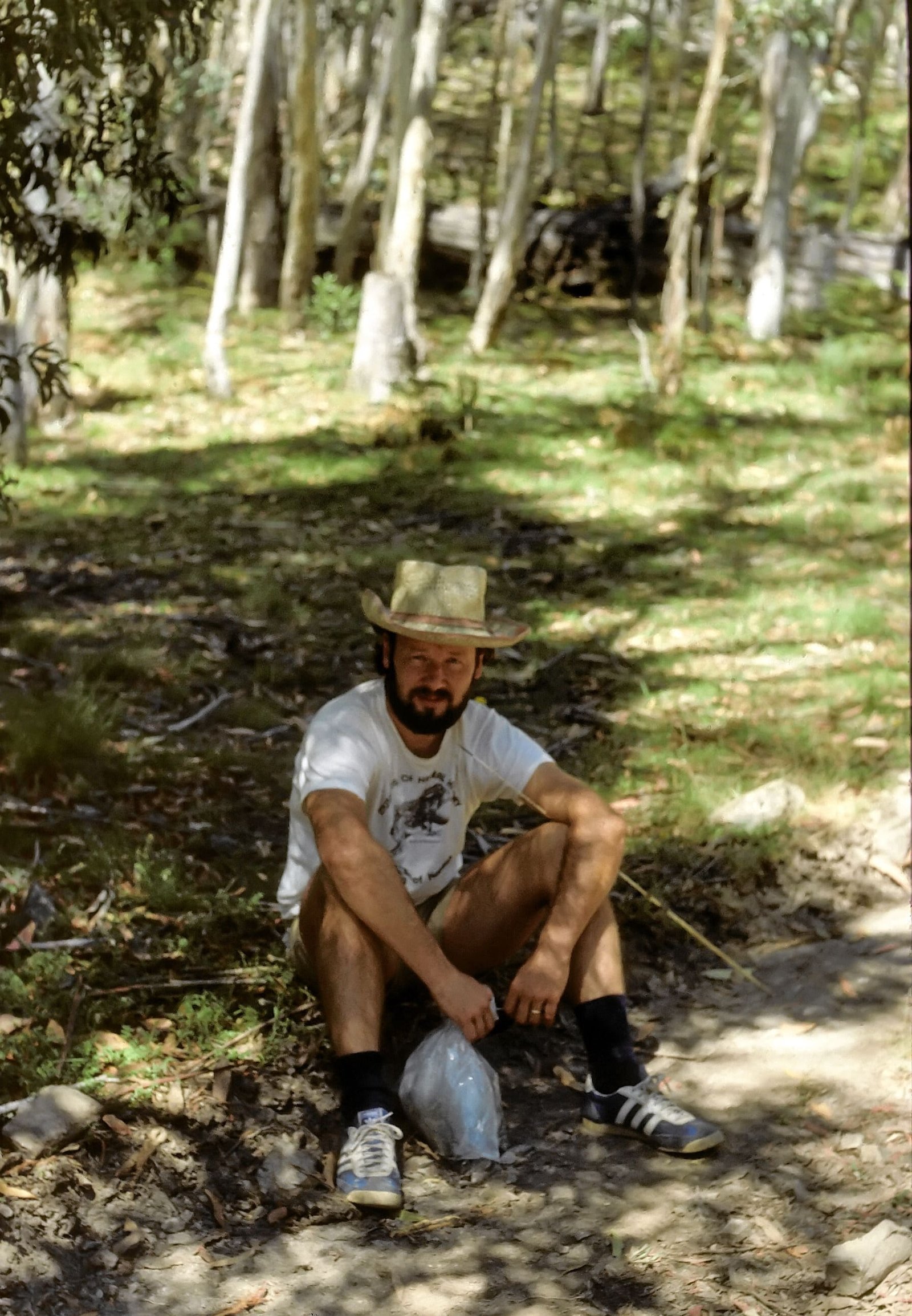
Rick Shine during fieldwork in Brindabella (© Terri Shine)
Hari Sridhar: Correct me if I’m wrong, but the work presented in this paper seems to have been done during your second post-doc. Could you share with us your motivation for doing this work? Why scincid lizards?
Richard Shine: My decision to work with skinks rather than snakes (the animals I had studied previously) was a strategic one. I wanted an academic job, so I needed papers in good journals, within a three-year timeframe – and I reckoned that I could do that more easily with abundant small skinks rather than rare large venomous snakes!
The conceptual focus grew out of my post-doc with Ric Charnov at the University of Utah. I wanted to combine fieldwork with life-history models, and I realised (after a field trip to southern Utah with an eminent figure in the field, Donald Tinkle) that although many of the theoretical models relied heavily upon “costs of reproduction”, empiricists had never tried to really measure those costs. So, it was an obvious choice for a project.
HS: Stepping back a bit, could you tell us how you got interested in reptiles?
RS: I have been passionate about reptiles since I was a small child, and have never outgrown that obsession.
HS: Why did you choose Corree Flats for your study?
RS: I framed two studies for my post-doc: one on costs of reproduction, and one on the evolution of viviparity (live-bearing). For logistical reasons, I wanted to do the two studies on the same system. For the viviparity study, I needed to find egg-laying species living close to the upper elevational limit for this reproductive mode, where the selective forces for viviparity might be measurable. My literature reviews had convinced me that viviparity mostly has arisen in very cold climates, where the soil is too cool for embryonic development and thus, maternal retention of eggs allows them to be kept warmer (by maternal thermoregulatory behaviour). That drove me towards montane skinks (a group which has shown multiple evolutionary transitions from oviparity to viviparity, especially in cold climates). Corree Flats occurred to me because I knew of Ross Pengilley’s ecological research there, on skinks.
HS: You say “Pengilley (1972) studied the ecology and reproduction of Corree Flats scincid fauna, and his work provided an invaluable background to the present study.”
Could you say a little more about this – was your interaction with Pengilley only through his writings or did you also know him personally, and have you met him?
RS: Ross was a tutor in my undergraduate classes at the Australian National University, and he led a student field trip to the Brindabella Range when I was in my second year of the degree. I was impressed by the abundance of lizards. So after I arrived back in Australia, I wrote to Ross (who by then had moved to the Northern Territory) and asked if he would be happy for me to conduct research on “his” system. He generously replied that I was welcome to do so.
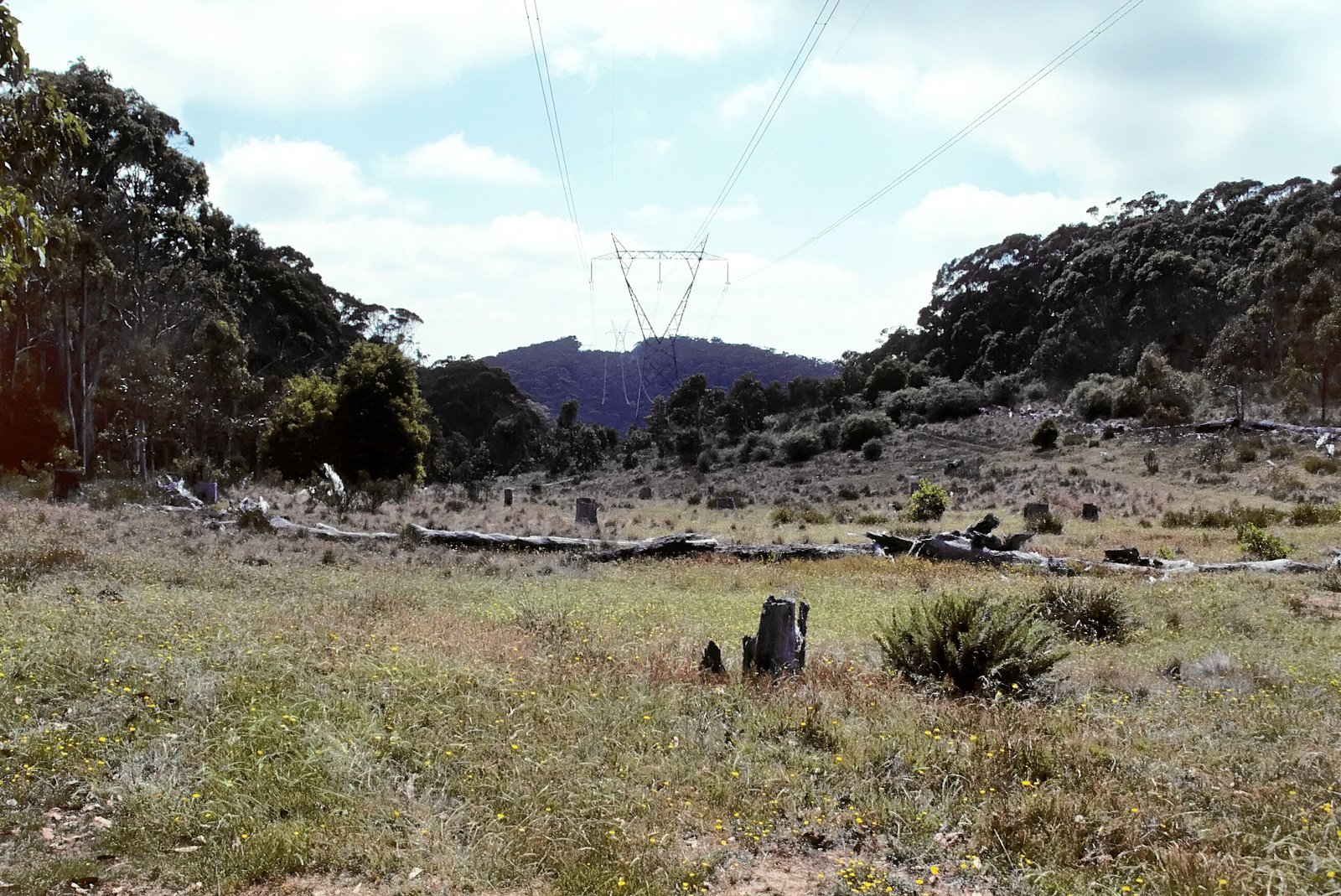
Field site in Brindabella range (© Rick Shine)
HS: You say you collected all the lizards “during four three-day visits to Corree flats from November to February”. Which year was this? You thank “T. Shine, M. Dick and N. Holland” for help during fieldwork – who were these people and can you tell us a little more about how they helped?
RS: T. Shine is my wife Terri, who came along on all the trips and helped with everything. Matthew Dick was a friend from my undergraduate years, who joined me to help catch lizards on some of the trips. Neville Holland was the local Parks ranger, who gave me advice and helped out in many ways – like pulling my car out of a deep bog one day!
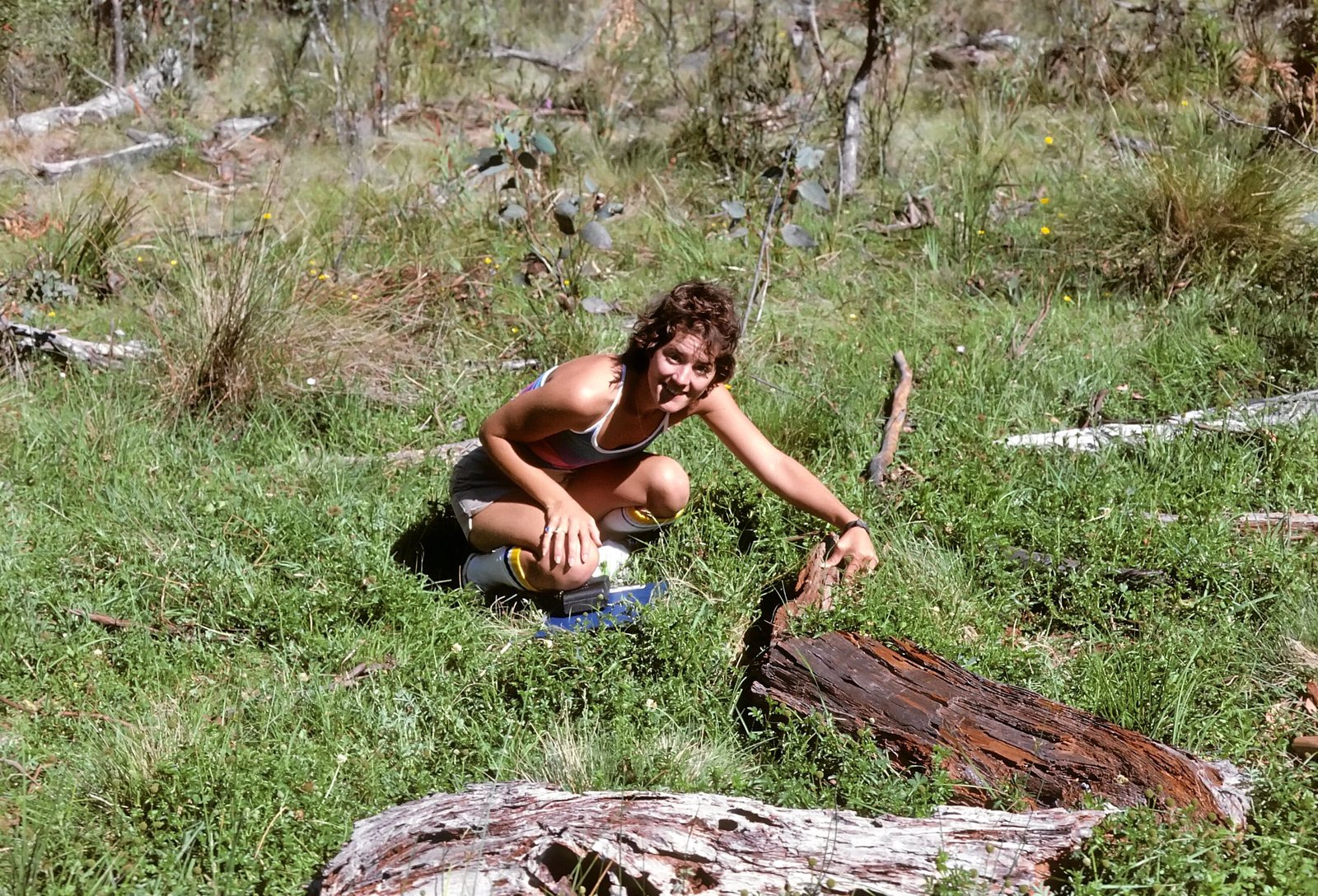
Terri Shine during fieldwork in Brindabella (© Rick Shine)
HS: Where were the laboratory and outdoor enclosure located? Are these still being used for research today? Do you still have the films you made and the runway you used?
RS: The enclosures were mostly children’s wading pools, and have long since perished – as has the primitive 16-mm movie film from which I recorded lizard running speeds. The original runway (three pieces of wooden plank nailed together) has been superseded by several successive generations of more high-tech runways, with automated speed measuring. A far cry from the early days!
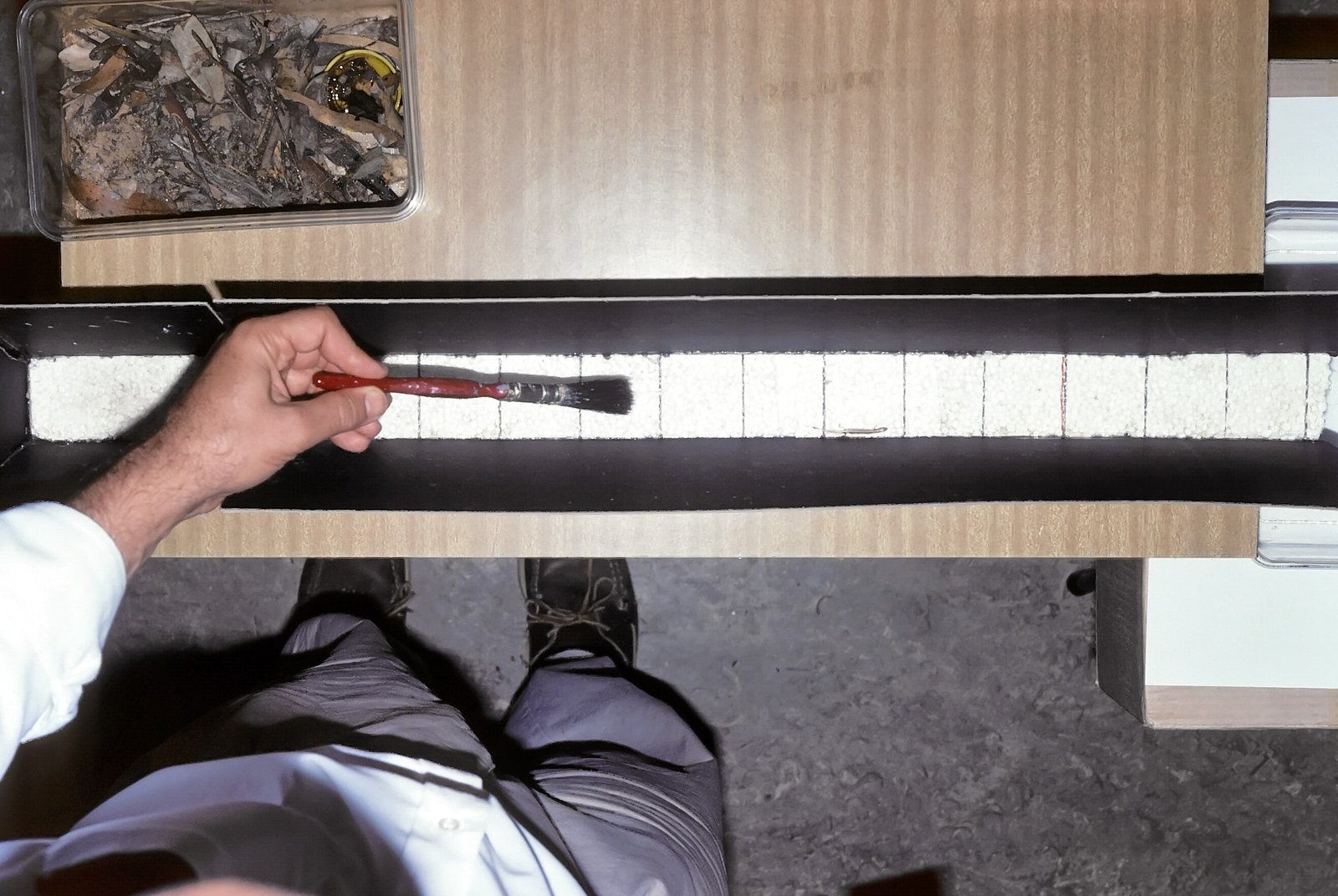
An early version of the lizard runway (© Mathew Dick)
HS: Do you continue to work in Corree Flats? When was the last time you visited? In what ways has the area changed since the time you worked there for this study? Are the lizards you studied still common in the area?
RS: The work there continued (with occasional breaks) for many years, but wound up in 2015. The area was devastated by a massive bushfire a few years ago, but has recovered strongly. A long drought wiped out some of the forest-dwelling lizard species (that rely on moist habitats), and chytrid fungus has almost exterminated the once-abundant Corroboree Frog (one of the most spectacular frogs on Earth). So, the system has changed – lizards are still common, but relative abundances of different species have shifted through time.
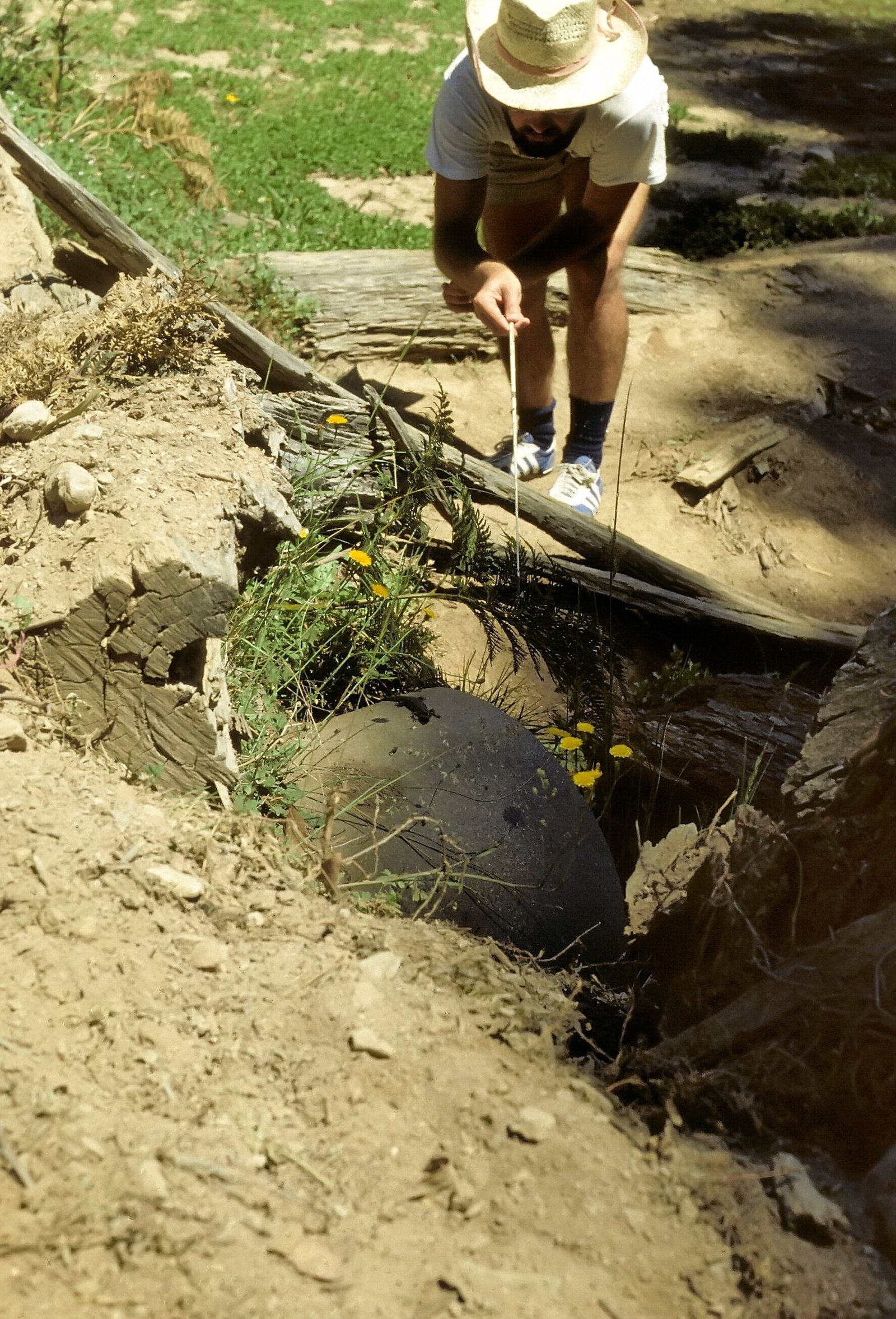
Rick Shine noosing a lizard (© Terri Shine)
HS: Why did you pick Drysdalia coronoides for the predation trials? Where were these snakes got from?
RS: I found the snakes while I was turning over logs and rocks to catch lizards (usually in the early morning, when the ground was cold and the reptiles were slow). They were a convenient size for lab trials on predation, and not venomous enough to be a risk.
HS: How were the figures for this paper drawn?
RS: By the “Departmental artist”, June Jeffreys, using Letraset (a now-obsolete technology).
HS: If you don’t mind, could you tell us a little more about the people you acknowledge, i.e. who they were, how you knew them and how they helped?
D.W. Tinkle
A.E. Greer
- Grigg
- Andersen
- Pyke
RS: Tinkle was the leading reptile life-history researcher of that era, and was based in Michigan. He and I had a somewhat stormy relationship, but he inspired me to meld theory and empiricism to understand the evolution of life-history traits.
Allen Greer was the Curator of Reptiles at the Australian Museum – the world expert on skink biology, and very generous with his advice and assistance as I struggled with the arcane intricacies of skink biology.
Gordon Grigg was a senior academic in my Department, who mentored me.
Don Anderson was a benevolent Head of Department.
Grahame Pyke was a fellow post-doc who shared my interest in evolutionary ecology, and helped me refine my ideas through discussion.
HS: Would you remember how long you took to write this paper? When and where did you do most of the writing?
RS: I’m unsure about the details, but I’d guess about a month. I wrote mostly in my office at work, but also at home in the evenings.
HS: Did this paper have a relatively smooth ride through peer-review? Was Oecologia the first place this was submitted to?
RS: Sorry, I don’t recall. I know that when I first wrote the paper, it was about twice as long because I launched into models using the empirical relationships I had documented. I decided to delete those (before submitting the paper, I think), and finally published them more than a decade later, in collaboration with one of my first graduate students – she worked on expanding the topic of that original paper (Shine, R., and L. Schwarzkopf. 1992. The evolution of reproductive effort in lizards and snakes. Evolution 46:62-75). That second paper led to a vociferous debate in the literature, because our conclusions ran contrary to established wisdom.
HS: What kind of attention did this paper receive when it was published?
RS: Not too much, that I recall. A couple of international people wrote to me and said they liked it, which of course made me feel wonderful. Bauwens and Thoen published a paper shortly thereafter pointing out that gravid reptiles could reduce some of those “costs of pregnancy” by reducing activity levels and remaining near shelter – absolutely true, and an important addition to the results from my paper.
HS: What kind of impact did this paper have on your career, and the future course of your research?
RS: The paper was well-cited, and doubtless helped my career. I have returned to the same topic several times over the succeeding decades, exploring different issues and refining the methodologies (e.g., Shine, R. 1992. Relative Clutch Mass and body shape in lizards and snakes: is reproductive investment constrained or optimised? Evolution 46:828-833). It’s never been a primary theme of my research program, but it keeps wandering in from left field and occupying my attention for a while.
HS: Today, 36 years after it was published, would you say that the main conclusions of this paper still hold true, more-or-less?
RS: Yes. Re-reading the Abstract, I wouldn’t change a word.
HS: If you were to redo this study today, would you do anything differently?
RS: Yes, inevitably. Better experimental design, more sophisticated methods to acquire and analyse data, and so forth.
HS: This paper has been cited over 600 times. Would you know what it is mostly cited for?
RS: Mostly because theoreticians often rely heavily on “costs” to explain life-history patterns, but there had been so little attempt to empirically measure those costs.
HS: If you were to redo Tables 2 and 3 today, how much bigger would they be? Would the conclusions you draw from them be different, with all the new information?
RS: The Tables would stretch for pages! But the patterns haven’t changed – see Brischoux, F., X. Bonnet, and R. Shine. 2011. Conflicts between feeding and reproduction in amphibious snakes (sea kraits, Laticauda spp.). Austral Ecology 36:46-52 for a recent summary of one of these topics (reproduction versus feeding) in one subset of taxa (snakes).
HS: Is the Relative Clutch Mass (RCM) measure still used today to characterise physical burdening of gravid females?
RS: Yes. People are now a bit more careful about how they measure it, though.
HS: Subsequent to this study, did you (or anyone else) repeat the study using the “more direct comparison between a gravid and non-gravid females”?
RS: Yes, this has now been done several times, and people have also looked at the causes for such differences (e.g., – is it just the physical burden of the clutch that slows down a pregnant female? – Olsson, M. M., and R. Shine. 1999. Locomotor impairment of gravid lizards: is the burden physical or physiological? Journal of Evolutionary Biology 13:263-268).
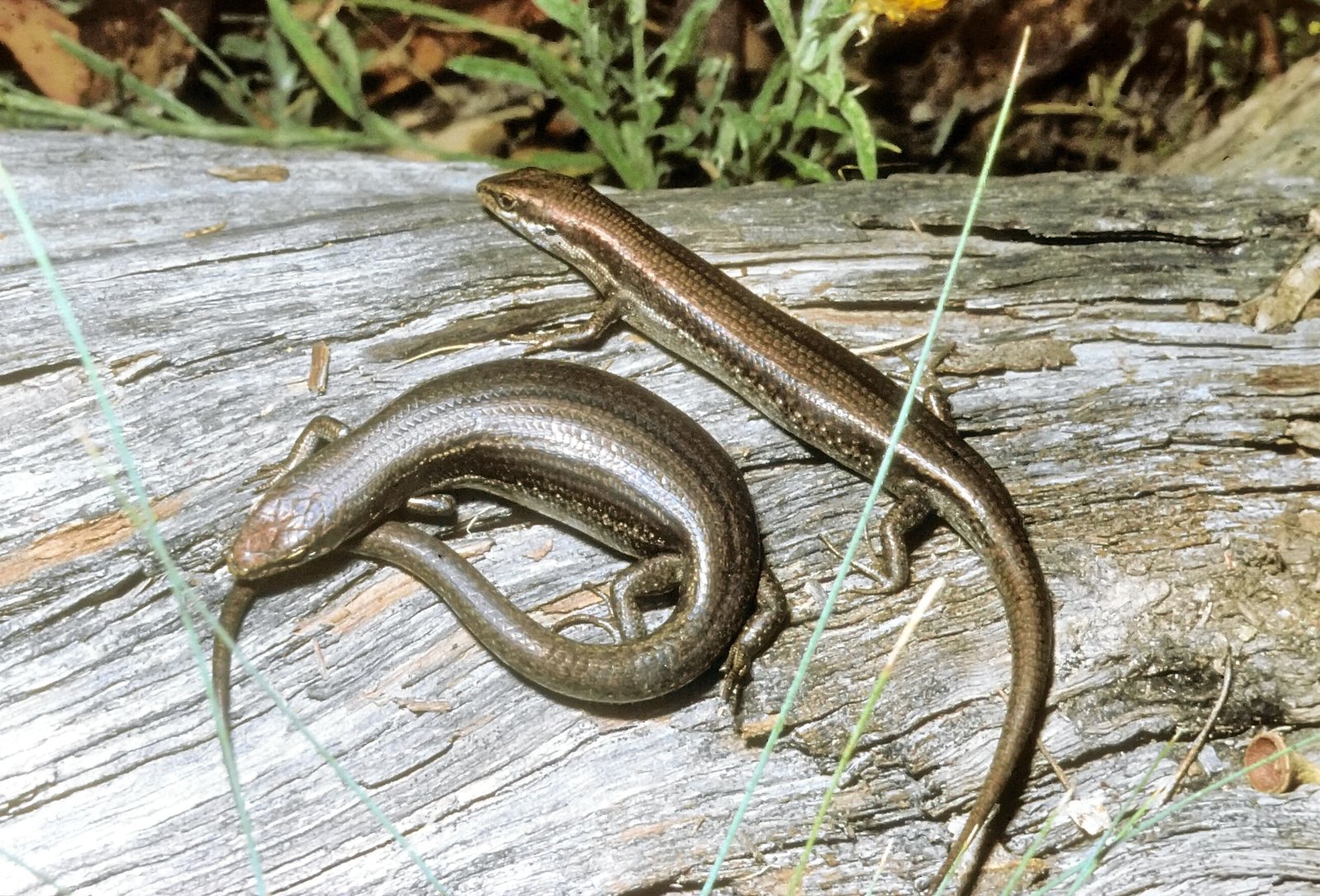
Pregnant and non-pregnant Pseudemoia (© Rick Shine)
HS: You say “Measurements of the survival costs of reproduction, although more difficult to quantify, may be the most useful single RE [Reproductive Effort] estimate for most lizard species”. Today, 36 years later, could you reflect on to what extent this has happened?
RS: We now have a few field estimates, but logistical constraints have prevented extensive work on the topic.
HS: Have you ever read this paper after it was published? If yes, in what context?
RS: No, I haven’t – until you asked me about it!
HS: Would you count this paper as a favourite, among all the papers you have written?
RS: Yes, I like its simplicity and generality.
HS: What would you say to a student who is about to read this paper today? What should he or she take away from this paper written 36 years ago? Would you add any caveats?
RS: It’s a fossil …. Reflecting conceptual foci and methodological approaches that dominated the field all those years ago, and have now evolved in many ways. But I guess its strength is that I tried to actually measure an important phenomenon that field biologists had ignored, despite its importance in evolutionary models. I did so in very inaccurate and clumsy ways, but the attempt led me to think about what tradeoffs might actually look like, and why they matter; and to invent a method (the raceway for measuring running speeds) that is now in wide use in research laboratories across the world. But I can’t claim all the credit for that innovation – Ray Huey at the University of Washington independently invented the same technology at about the same time.

0 Comments